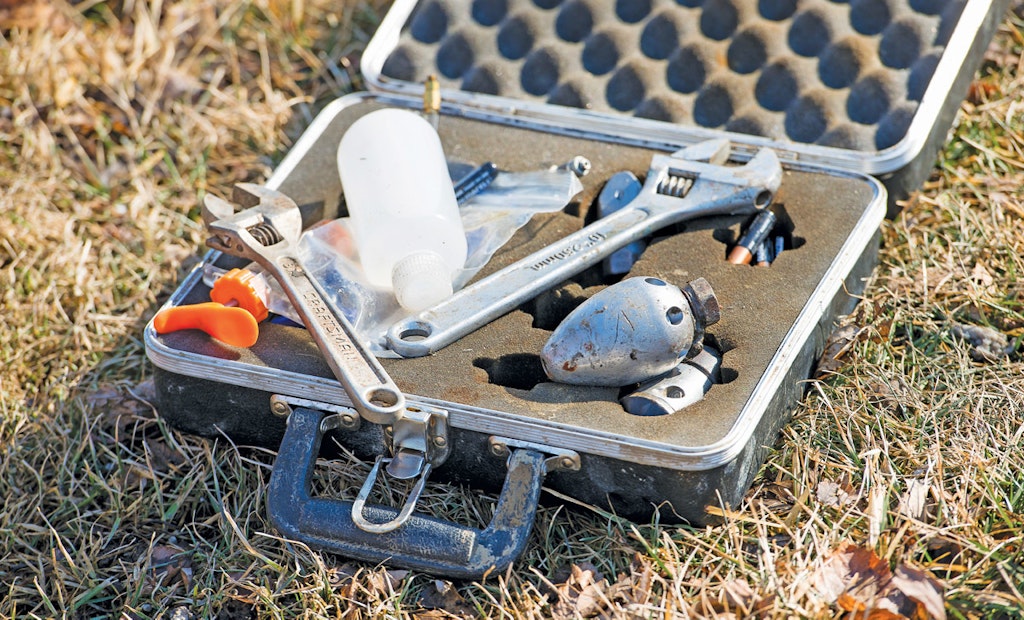Interested in Safety?
Get Safety articles, news and videos right in your inbox! Sign up now.
Safety + Get AlertsDiscussions of safety in confined spaces and other dangerous environments often center on protecting employees from toxic gases, falls or other big health hazards in the workplace. Sometimes overlooked are the small things — small tools like the hammer or drill that are handled pretty much without thinking about it — or the seemingly small risks taken when an employee fails to utilize fundamental PPE.
Here’s the thing: Small is relative. Losing a finger or sight in one eye is not as horrific as losing a limb or one’s life, but it is disabling nonetheless and oftentimes is avoidable. Word to the wise: Think small — like good company safety managers do.
One starting place to explore the subject of working safely with small tools is the U.S. Department of Labor’s succinct guidelines. In short, always use a correct tool that is in good working condition, and operate it as recommended by the manufacturer while wearing correct PPE.
In more detail, those rules include:
• Use the right tool for the job.
A screwdriver is not a chisel, nor a Crescent wrench a hammer. One hand tool can be utilized to mimic another, but they usually are poor substitutes. The screwdriver lacks a chisel’s tempered and sharpened edge. The adjustable wrench is without a hardened, flat surface designed for striking. Misusing a tool, therefore, is not only ineffective but in most cases, unsafe. The unhardened edge can shatter, sending shards toward your eyes; the rounded surface of the wrench can slip off and strike your hand instead.
“I’ve been there and done that. Everyone has,” says John Flanagan, safety manager of North American Pipeline Services. “Usually it is using a wrench instead of a hammer or a hammer as a pry bar — the right idea, the wrong tool. When we see something like that, we ought to say, ‘Billy, are you really going to do that? Why don’t you take a minute and go get the right tool.’”
• Examine each tool for damage before use and do not use a damaged tool.
If the handle of a tool, whether plastic, wood or metal, is cracked or burred, tag it as damaged and ask your supervisor for a replacement because a cracked handle is in danger of fracturing and potentially injuring the user. The temptation is to attempt to repair a handle in that condition by, perhaps, wrapping it in duct tape. Unfortunately, that not only doesn’t restore the complete strength of the handle, it imparts false confidence in the tool’s integrity. Both conditions are potentially unsafe.
• Provide the correct PPE and use it properly.
Let’s face it, until a fleck of steel tossed up by a drill bit enters an eye or a protruding piece of steel strikes the head when a person stands up, the safety glasses or hard hat you’re supposed to be wearing seem like a lot of trouble. But the fact is, some of your work environments contain hazards that only wearing of glasses and a hat can mitigate.
Failure to don PPE when using hand tools mostly is a consequence of complacency. “When an employee has done something a million times, there is a complacency risk,” says Chris Ravenscroft, owner of Koberlein Environmental. He says the risk is increased by the fact that jobs in the field, versus in a factory, present a variety of unique situations and conditions. However, the hand tools remain the same in every case and protective gear is designed to work in all those situations and conditions.
• Operate a tool according to a manufacturer’s instructions.
Example: If a drill job has the potential to penetrate a live electric circuit, safety rules require that an insulated drill be utilized to protect the user against a shock. Wrapping the handle of an uninsulated drill in electrical tape does not insulate it. Some time-pressed workers do it anyway for psychological comfort. These often are the same employees who can be seen passing a drill from one level to another by dangling it from its cord, a mishandling that can lead to damage to the tool or injury of another worker.
While the Labor Department guidelines are helpful, they hardly cover every contingency. How about falling hand tools, for instance? If a falling wrench doesn’t strike and injure someone working below, the tool’s fall at the very least requires a worker to descend to a lower level and retrieve it.
“A lot of times a worker doesn’t attach a tool to a tether, uses the tool and then goes on working and the tool falls out of his pocket or hands and there you go,” says Kyle Irwin, founder of Irwin’s Safety, a Canadian safety management firm. “In most cases, if they are tied off, the tools do not become a hazard. The problem is, you don’t see that tying-off happening enough.”
Injuries from small tools may vary in particulars from one situation to another. And while bad habits generally are universal in nature, local conditions can produce one error of judgment over another. For example, working in a northern climate might mean bulkier clothing is worn for warmth, increasing the chance of clothes being snagged by a rotating machine or catching fire if unknowingly pressed against a hot drill bit.
Ravenscroft mentions two small tools that in his experience have proven the most problematic for workers. One is a device that spins wire cable to scour clogged pipes. “It requires hands-on operation and that requires a level of awareness. It calls for the right kind of gloves that don’t catch the material and cause it to twist,” he says.
“The other tool is an arctic blaster, which uses hot water and steam to thaw pipes through a hose. It’s very efficient, but it’s a personal burn hazard and a fire hazard. Techs know when they take these tools off the truck, they represent real danger.” To offset the intrinsic danger of the thawing tool, its use is addressed in annual training and the process of working with the tool is reviewed regularly.
A sometimes-unspoken issue in respect to wearing PPE is comfort. Is discomfort a reasonable excuse for not donning a hard hat or bulky gloves?
“Yes and no,” Irwin says. “There definitely is ill-fitting equipment. But there are so many pieces of equipment manufactured, just find one that will work. The larger problem is avoiding manufacturers’ recommendations. When using a respirator or dust mask, it should be a good fit, but a lot of people just grab a mask. That can give you false security that you’re being protected.
“Do what the manufacturers say you should do. It is the responsibility of an employer to see that employees follow the recommendations. It all boils down to everyone in a program taking some responsibility for themselves.”
Flanagan, of North American Pipeline Services, acknowledges that equipment can be uncomfortable. “They are hard hats. I was in the service and had to wear a helmet. It wasn’t the most comfortable thing.” On the other hand, as safety manager, he says he tries to provide PPE that will be used. “I go out and order a couple dozen pair of gloves and say, ‘Here, try them out. Let me know how you like them. If you say it doesn’t work for you, OK, we’ll try something else.’ I try to accommodate each crew.”
Ravenscroft acknowledges that comfort “sometimes is an issue. So, making sure that PPE is available and comfortable is as important as the expectation that employees will use it. We try to be understanding. Safety committee members are close to operations and they know that safety glasses fog up and what can be done in that environment. We try to find the best glasses we can. The best might cost twice as much, but we’re not going to save a couple dollars and provide PPE that doesn’t work for our employees. It’s a balancing act.”
Seemingly small decisions like these by safety committees and managers are vital. They have a large impact on the lives of employees working in potentially dangerous situations.










